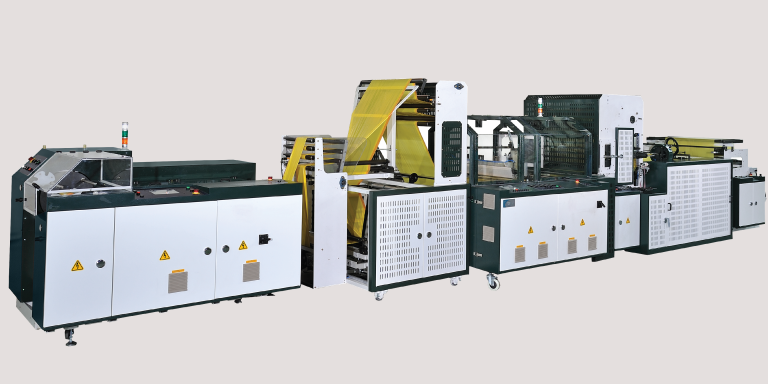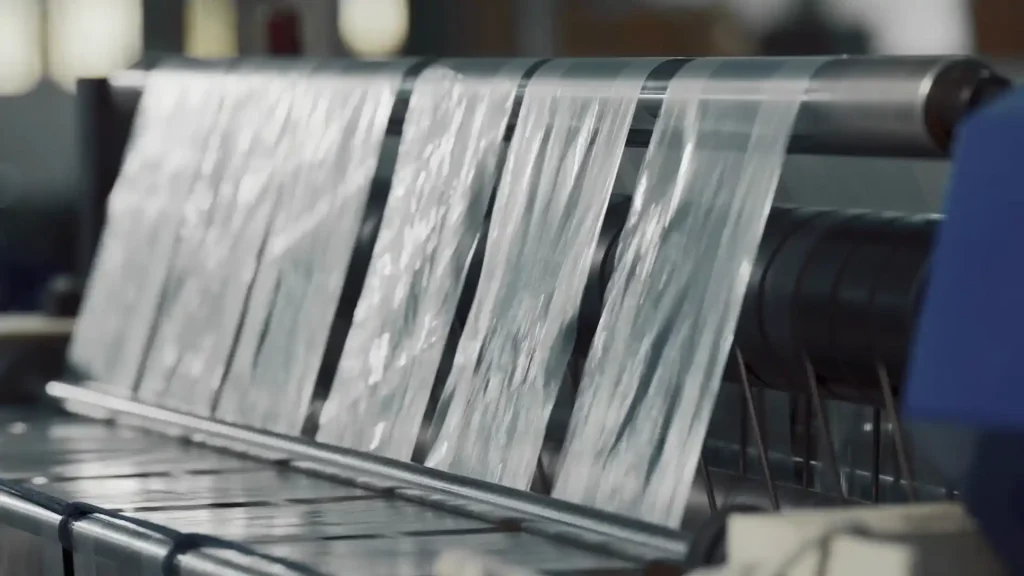Is Recycling Enough? Debunking the Last 5 Myths About Plastic (Part 2)
In the first part of this article, we addressed five myths about plastic related to sustainability and packaging. In this second part, we continue to debunk common misconceptions—focusing on recycling, bio-based materials, microplastics, and the safety of recycled plastics. If you haven’t read Part 1 yet, we recommend reviewing it for complete context.


Bag Making Machines - Innovation and Efficiency
Myth 6: Recycling plastics is not enough to make a difference
Some argue that recycling does little to solve the plastic waste problem, suggesting it is insufficient. In fact, plastic recycling is a cornerstone of the circular economy, delivering multiple benefits:
Resource recovery: Recycling allows used plastics to re-enter the production cycle, reducing the need for virgin raw materials and decreasing the amount of waste sent to landfills or the environment.
Socioeconomic benefits: The recycling industry creates jobs and income for thousands of people (often in vulnerable communities) who make a living from collecting and processing plastics. In many cases, it even represents a net financial gain by reducing waste management costs and supplying valuable raw material.
Ongoing innovation: Far from stagnating, the plastic recycling sector is constantly innovating—developing better collection, sorting, and recycling technologies, as well as consumer incentive programs to increase post-consumer plastic recovery.
Key to sustainability: Contrary to this myth, recycling is essential for sustainable development. It reduces the extraction of new resources, saves energy in manufacturing, and cuts down on pollution. In short, recycling is not “insufficient”—it is one of the pillars of solving the plastic waste challenge.
Bag Making Machines – Innovation and Efficiency
Myth 7: Plant-based plastics are always better for the environment
There is a growing belief that bioplastics or plastics made from plant-based sources are automatically more sustainable than conventional plastics. The reality is that not all bio-based plastics are inherently eco-friendly—their impact depends on several factors:
Resource use in agriculture: Producing bioplastics from crops can require large areas of farmland with high water, fertilizer, and energy consumption. This can compete with food production and harm ecosystems.
Biodiversity impact: Intensive agriculture to produce raw materials for bioplastics can lead to deforestation or loss of biodiversity if not managed responsibly, negating much of the intended environmental benefit.
Life cycle analysis: To determine whether a bio-based plastic is truly more sustainable, a full life cycle assessment (production, use, and end-of-life) is essential. A plant-based plastic is only greener if it generates less total impact at every stage compared to conventional plastic.
In summary, simply being plant-derived does not guarantee that a plastic is “green.” What matters is how it’s produced, used, and managed at the end of its life cycle.
Bag Making Machines – Innovation and Efficiency
Myth 8: Mexico doesn’t recycle plastic
It is sometimes assumed that countries like Mexico recycle little to no plastic. The truth is that Mexico has made significant progress and is now a regional leader in recycling in Latin America. Some key figures:
Plastic recycling in Mexico has grown by 200% over the past two decades, supported by a robust collection and processing infrastructure.
In the case of PET (polyethylene terephthalate) bottles, Mexico recycles a higher percentage than countries such as the United States, Canada, or Brazil, reaching rates comparable to the European Union average.
Currently, 6 out of 10 plastic containers placed on the Mexican market are recovered for recycling—meaning most post-consumer plastic is reintroduced into the production cycle instead of being discarded.
These efforts have positioned Mexico as a leader in circular economy practices, showing that effective waste management and industry–consumer collaboration can deliver strong results.
Bag Making Machines – Innovation and Efficiency

Myth 9: Plastic packaging is the main source of microplastics
With growing concern over microplastics (tiny plastic particles dispersed in the environment), many assume they mainly come from packaging. Studies show a different reality: the largest sources of microplastics come from outside the packaging sector:
Tire and brake wear: Everyday vehicle use releases large amounts of microplastic particles from the wear of tires and braking systems.
Industrial and marine paints: Paint coatings on ships, road markings, and other surfaces degrade over time and friction, releasing microplastics into the environment. In the maritime industry alone, such wear contributes more than 210,000 metric tons of microplastics annually.
In contrast, plastic packaging contributes only a minimal fraction to microplastic pollution—and this can be virtually eliminated if packaging is properly collected and recycled before it reaches the environment. Recycled plastic does not end up in oceans or ecosystems, and therefore does not generate microplastics. Furthermore, recent scientific studies indicate that current human exposure levels are extremely low and, to date, pose no proven health risk.
Blow Molding Machines, blow molding market, blow molding applications, plastic containers, automotive industry, toy industry, plastic furniture, medical sector, plastics business opportunities.
Myth 10: Recycled plastic is less safe and hygienic than virgin plastic
A persistent myth is that products made from recycled plastic are of lower quality or present a health risk compared to those made from “virgin” (new) plastic. In reality, recycled plastic in the market meets the strictest hygiene and quality standards set by international regulatory bodies:
Strict regulations: Agencies such as the U.S. Food and Drug Administration (FDA), the European Union, and Mercosur approve the use of recycled plastic in food-contact applications, provided it comes from certified processes. This ensures that recycled containers are safe for storing food and beverages.
Safe processes: Modern recycling technologies—such as depolymerization, advanced chemical recycling, and extrusion with fine filtration—are tightly regulated to remove impurities. Manufacturers follow strict protocols to ensure that recycled material is contaminant-free and suitable for multiple uses, including food-grade applications.
Equivalent quality: Through controlled additive use and blending, recycled plastic can achieve mechanical and safety properties virtually equivalent to virgin plastic. In other words, a product made from quality recycled material will perform just as well and be just as safe as one made from new material—while also being more sustainable.
Rather than banning or reducing plastic without technical grounds, the evidence points to a clear conclusion: the key is innovation and responsible management. We must design and use efficient, recyclable packaging with a low carbon footprint, supported by robust recycling and reuse systems. When plastic is properly managed throughout its life cycle, it becomes an ally—protecting essential products (medicines, food, medical devices), preventing waste, and optimizing resources.
At AMK Plastics, as part of the industry supplying machinery for plastic manufacturing, we share this commitment to the circular economy. We support manufacturers and processors in adopting technologies that enable more sustainable production, closing the loop on materials. Ultimately, debunking myths about plastic with data and science allows us to harness its benefits while minimizing its impacts—building a more sustainable future for all.
blow molding machines for business, blow molding investment, blow molding advantages, plastics industry growth, plastics manufacturing profitability, blow molding machine distributor, plastics machinery supplier

